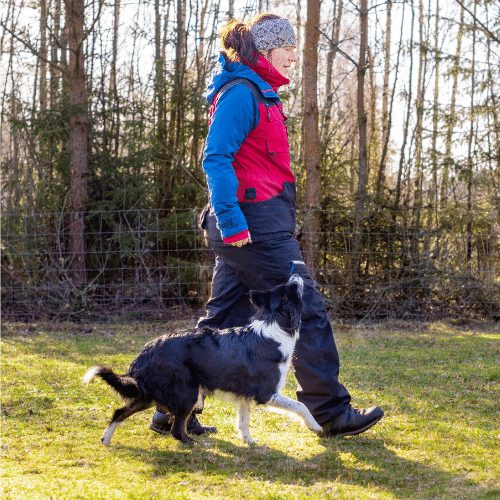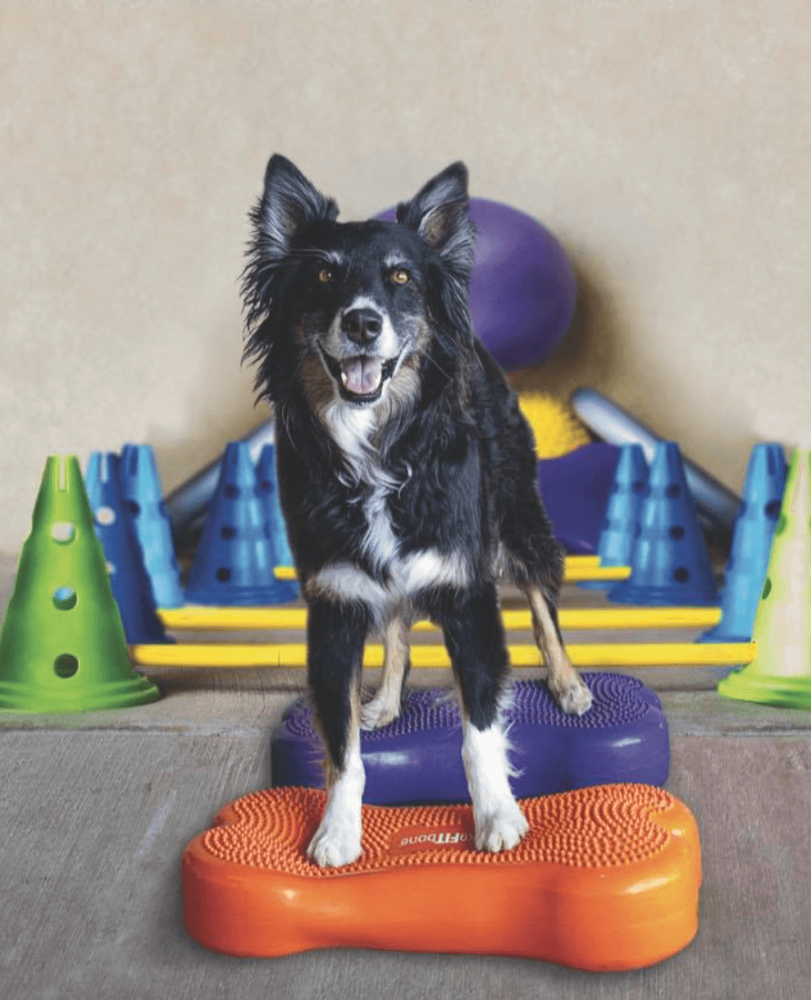At what age should you start agility training?
March 24, 2021 2021-06-04 10:38Did you get a new puppy and cannot wait to introduce him to a teamsport for the two of you? Maybe you have seen videos of agility competitions or have even visited a show close to you. No matter what breed you have, your dog will love the interaction and physical exercise with you.
But at what age can you start training together? Can young puppies already jump and do the weave poles? How do you know if your dog is ready?
The quick answer is that you can start flatwork with a
Let’s look at the deciding factors when it comes to starting agility training with your dog.
Table of Contents

When can you start agility training with puppies?
The age at which you should start training will come down to what you are looking to train. Contrary to popular opinion, agility does not only consist of the dog navigating obstacles such as jumps, weave poles or the A-Frame. Instead, there is a lot of communication between the handler and the dog, and the dog has to learn in many training sessions how to follow the handler’s cues while moving around the course.
You should absolutely wait until your puppy is finished growing before you start to have him clear jumps or do weave pole training. However, even very young puppies (as young as 8 weeks) can start what is known as “flatwork training”.

Flatwork training
In flatwork, dogs learn to follow the handler’s motion and cues without any obstacles involved. In the beginning, this can be as easy as having your puppy heel next to you. Later on you introduce turns to the left and right as well as speeding up and slowing down. This may sound easy, but if you try it you will find that it is not that simple for your puppy to always stay by your side.
Flatwork training is essentially “just walking”. There is no impact on your dog’s joints and he will not risk getting hurt. In fact, you can even do your flatwork training during walks or after a potty break in your backyard.
Many owners starting out in agility are not big fans of flatwork because it can be “boring” and does not involve obstacles. However, the more time you invest into teaching your dog to follow your cues without obstacles, the faster he will succeed once you add the obstacles!
Especially fast and athletic dogs often leave their handlers in the dust once obstacles are introduced or become so excited that they cannot listen to their owners anymore.
A good foundation of flatwork will make sure your dog will always pay attention to you!
How do I start my puppy in agility training?
You can begin agility training with your puppy early on at home, as long as you take it easy on his growing body. Skills that you can teach even a small puppy include:
- Going through an agility tunnel
- Walking next to the handler at different speeds
- Turning left and right when cued
- Coming when called
- Staying when told
- Balancing on a low and stable board
Our Dog Agility @ Home online course offers over 100 lessons on how to get your dog started in this sport, right from home!
If you have aspirations to compete in agility trials, you can also go to a local club or competition and find a trainer there. Do not be afraid to “shop around” a bit – not every trainer will be a perfect match for every dog owner. Find the trainer who makes the best impression on you and your dog.
When can puppies do a full agility course?
As long as your dog is a puppy, he should never navigate a full agility course. While dogs under 1 year old can complete courses consisting of low jumps and tunnels, they should not be put onto any contact equipment (like the A-frame or dogwalk) and not be taught to perform weave poles. Your puppy should also absolutely not jump high.
It can seem tempting to make your puppy do a big course, but you need to put his health and wellbeing first. Do not risk any injuries, or your puppy might have his agility career cut short before it has even really started!
The earliest that a dog should complete a full agility course is at an age of 1 year, and this is only for small dogs. Small dogs mature faster than medium and large dogs and will be finished growing at 1 year old.
Large dogs may have to wait until they are 18 months old to do a full agility course. If you own a giant breed such as a King Shepherd, you might want to wait even longer to give your dog enough time to definitely finish growing.
At what age can my puppy do which agility obstacles?
Again, this will depend on his breed and size. As a rule of thumb, you can plan to have your puppy do:
- Full-sized jumps at 12-18 months
- Weave poles at 12-18 months
- Teeter totter at 10-16 months
- A-frame at 12-18 months
- Dogwalk at 10-16 months
- Tunnels at 8 weeks
- Pause table at 4-6 months
If in doubt about whether your dog is ready to learn a specific obstacle, you can always check in with your veterinarian to be sure.
Dog agility training & fitness
It is important to note that agility is a sport for fit dogs – not a sport to make dogs fit. Agility is like a sprint – nobody would think to get into shape by sprinting alone! A base level of fitness as well as cross training is needed to perform agility safely.
You should not start agility with your dog or puppy if he is overweight or out of shape. Your dog should get regular walls and off-leash playtimes. You can also try out some trick training or canine fitness. If your dog can move his body in many different ways, his agility performance will be safer and faster.

The Bottom Line
You can start agility flatwork and tunnel training with a puppy as young as 8 weeks old. However, until your dog can complete a full course he should be at least 12-18 months of age. Agility is a high-impact sport. Dogs that are not taught to perform obstacles safely can slip and fall and potentially end their agility career forever. Do not rush your puppy into performing obstacles when he is still young. Taking it slowly and teaching your puppy a solid flatwork foundation is the best way to guarantee a long and successful time as an agility dog – whether at competitions or just for fun in your backyard!


